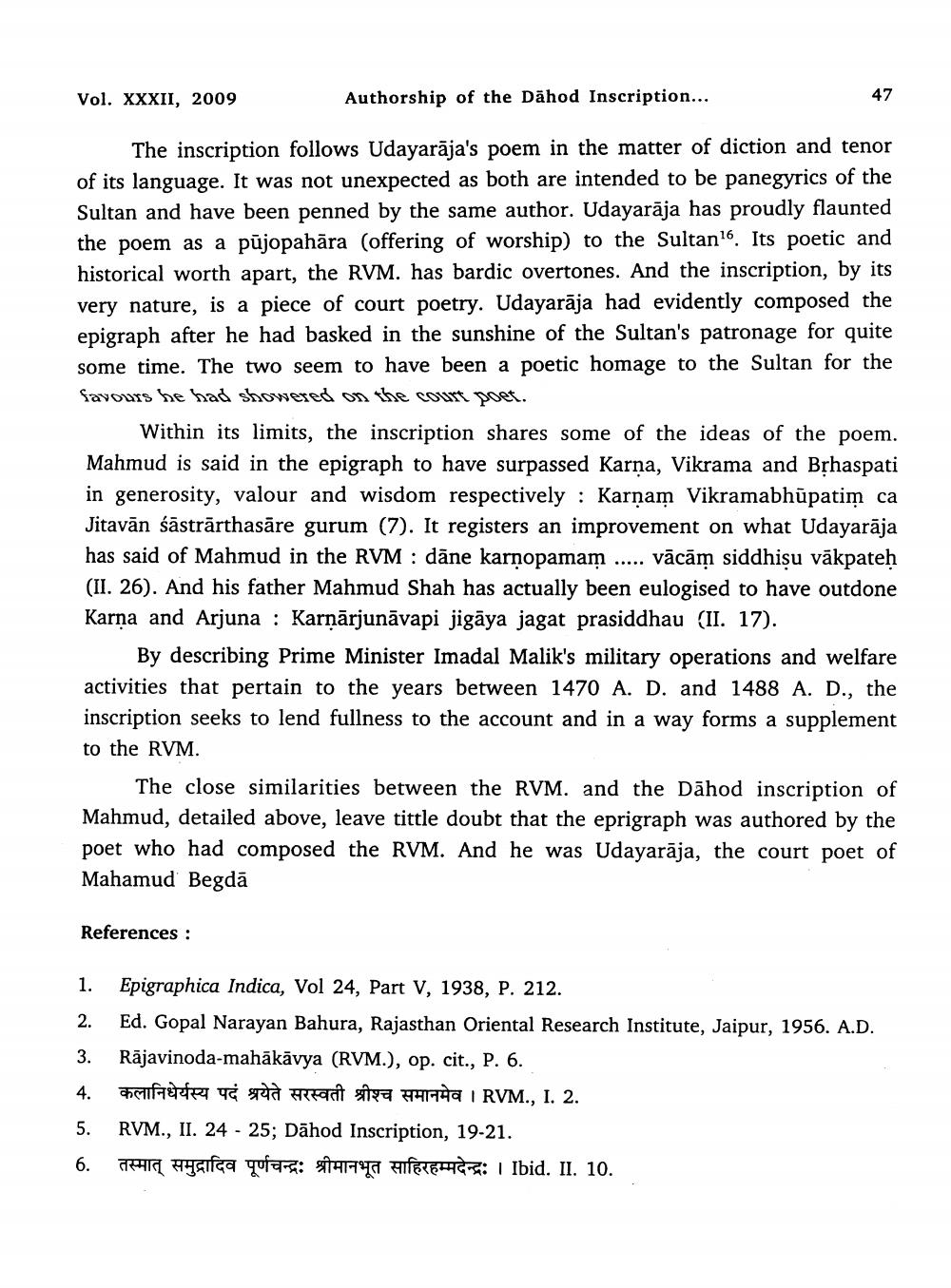________________
Vol. XXXII, 2009
Authorship of the Dahod Inscription...
The inscription follows Udayarāja's poem in the matter of diction and tenor of its language. It was not unexpected as both are intended to be panegyrics of the Sultan and have been penned by the same author. Udayarāja has proudly flaunted the poem as a pūjopahāra (offering of worship) to the Sultan6. Its poetic and historical worth apart, the RVM. has bardic overtones. And the inscription, by its very nature, is a piece of court poetry. Udayarāja had evidently composed the epigraph after he had basked in the sunshine of the Sultan's patronage for quite some time. The two seem to have been a poetic homage to the Sultan for the favours he had showered on the court poet.
Within its limits, the inscription shares some of the ideas of the poem. Mahmud is said in the epigraph to have surpassed Karna, Vikrama and BỊhaspati in generosity, valour and wisdom respectively : Karņam Vikramabhūpatim ca Jitavān śāstrārthasāre gurum (7). It registers an improvement on what Udayarāja has said of Mahmud in the RVM : dāne karnopamam ..... vācām siddhişu vākpateh (II. 26). And his father Mahmud Shah has actually been eulogised to have outdone Karna and Arjuna : Karnārjunāvapi jigāya jagat prasiddhau (II. 17).
By describing Prime Minister Imadal Malik's military operations and welfare activities that pertain to the years between 1470 A. D. and 1488 A. D., the inscription seeks to lend fullness to the account and in a way forms a supplement to the RVM.
The close similarities between the RVM. and the Dāhod inscription of Mahmud, detailed above, leave tittle doubt that the eprigraph was authored by the poet who had composed the RVM. And he was Udayarāja, the court poet of Mahamud Begdā
References :
1. 2. 3. 4.
Epigraphica Indica, Vol 24, Part V, 1938, P. 212. Ed. Gopal Narayan Bahura, Rajasthan Oriental Research Institute, Jaipur, 1956. A.D. Rājavinoda-mahākāvya (RVM.), op. cit., P. 6.
offerte e said wront sea I RVM., I. 2. RVM., II. 24 - 25; Dahod Inscription, 19-21.
1 wysiga quras: s14a4a HECHTS: 1 Ibid. II. 10.
6.




